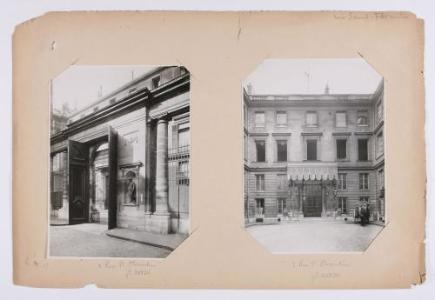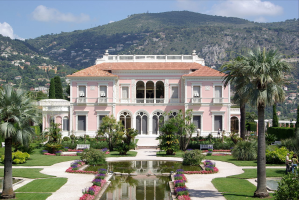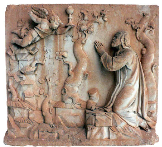- Accès directs
Béatrice Ephrussi de Rothschild Charlotte Béatrice Ephrussi de Rothschild
Paris, 1864 - Davos (Suisse), 1934
Marcel Proust described her as « a ravishing person, similar to a portrait by Nattier or de Larguillière » (1901). Beatrice is the second daughter of Alphonse and Léonora de Rothschild(1837-1911). She spent her youth between the Saint-Florentin mansion, the château de Ferrières and the villa in Cannes where she met up with her cousin Arthur with whom she shared a taste for collection and eccentricity. At the age of 20, she married Maurice Ephrussi (1849-1916) born of a Jewish banking family from Odessa. They separated in 1904. From this date and following her father’s death in 1905, she had at her disposal important amounts of money that she dedicated to the acquisition of art until her death.
In 1934, she bequeathed a very important eclectic collection of works of art to the Institut de France. Those included exceptional works such as Sèvres and Vincennes porcelains, Italian Renaissance paintings, an important drawing collection from Fragonard and architectural fragments from the Middle Ages and the Renaissance. Their acquisition seemed to follow a trend set by major Italian art dealers, or by American museums such as the Cloisters museum in New York (opened in 1914).
The mansion in Saint-Jean-Cap-Ferrat was rarely occupied by Béatrice. It was transformed into a museum by architect Albert Tournaire, responding to her wish to create “a museum while keeping the atmosphere of a Salon”. This villa-museum was also bequeathed to the Institut de France in 1934. The Institut de France is now in charge of four collections: the collection from Beatrice’s Paris mansion (19, avenue Foch, which today serves as the Embassy of Angola) where she gathered her major works; the one from her two villas in Monte Carlo (Villas Soleil and Rose de France) and finally the collection of Saint-Jean-Cap-Ferrat.
Through Béatrice’s bequests, around six thousand works of art entered the patrimony of French institutions.
Laura de Fuccia, project manager, Institut national d’histoire de l’art

Charles Lansiaux, Hôtel Rothschild, 2 rue Saint-Florentin à Paris, 1er arrondissement, 22,4 x 16,5 cm, 1916, @musée Carnavalet, Paris.
Villa Ephrussi de Rothschild, Saint-Jean-Cap-Ferrat.
Further reading
Bibliography
– Kolbe, Philip (dir.), Correspondance de Marcel Proust, Paris, Librairie Plon, 1988, XVI, n. 17, p. 67.
– Prevost-Marcilhacy, Pauline, Les Rothschild bâtisseurs et mécènes, Paris, Flammarion, 1995.
– Steve, Michel, Béatrice Ephrussi de Rothschild, Nice, Audacia éditions, 2008.
– Prevost-Marcilhacy, Pauline (dir.), « Béatrice Ephrussi de Rothschild, 1864-1934 », in P. Prevost-Marcilhacy (dir.), Les Rothschild, une dynastie de mécènes en France, 3 vol., Paris, éditions du Louvre/BNF/Somogy, II, 2016, expecially :
– Malgouyres, Philippe, « Sculptures », in P. Prevost-Marcilhacy (dir.), 2016, II, p. 260-271.
– Prevost-Marcilhacy, Pauline, «Béatrice Ephrussi de Rothschild », in P. Prevost-Marcilhacy (dir.), 2016, II, p. 250-259.
Online Resources
– The collection of the drawings and paintings from the Middle Ages to the XXth century given by Béatrice de Rothschild and held at the Villa Ephrussi de Rothschild are accessible on line at AGORHA. Since 2018, the inventories of porcelain, furniture and medieval sculptures can also be viewed at the same address.










 2 Rue Vivienne - 75002 Paris
2 Rue Vivienne - 75002 Paris




